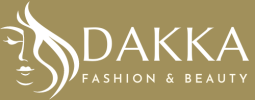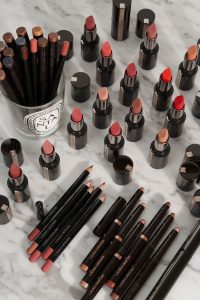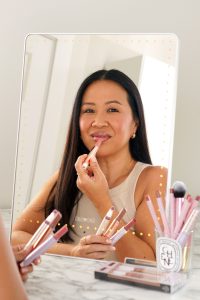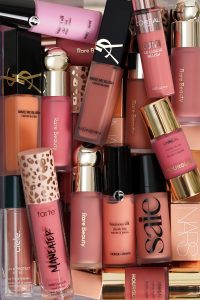[ad_1]
Please note: this post contains some press samples gifted to me for trying (marked with *’s) and also affiliate links which means that if you purchase anything using these links, a very small percentage of the product’s cost will come to me at no expense to yourself. This helps with the running costs of my blog, thank you!
< disclaimer >
I’m not in any way a dermatologist but I’ve had KP for as long as I can remember and understand the science of skin due to my degree and being an Aveeno ambassador, so I just want to share what I’ve learned from researching and also sharing products I’ve tried myself so far.
Please do consult a doctor or dermatologist first and check the NHS website for more info if it is something that is really bothering you (most of which I’ve included in this post)!
So seeing as KP aka Chicken Skin / Strawberry Legs is very common (particularly in POC), I figured I’d dedicate this blog post to it, as it’s something I’ve had on the back of my arms for ages and would like to help anyone else who also has it and wants to read up more on it and is thinking about buying products for it.. read on to find out more!
Keratosis pilaris
What is KP?
Keratosis Pilaris is a very common but harmless skin condition that has an appearance of small bumps and can vary in colour – they can be red, white, skin-toned or darker.
It is usually painless, but the skin can be dry, rough or itchy and just generally doesn’t have that “smooth skin” appearance; it’s essentially a dry skin condition.
It is common on the back of upper arms (Chicken Arms/Skin) and legs (aka Strawberry Legs) but can be found on other body parts too.
KP isn’t infectious, so you cannot spread or catch it.
Causes
Keratosis pilaris happens when hair follicles become blocked with a build-up of keratin (a protein found in skin, hair and nails).
It’s not known to be triggered by products or dietary choices, but as I’ve studied nutrition I’d be interested in finding a link myself!
So far it seems to just be hereditary – so if your parents have it you’ll probably have it too (yay genetics!)
Managing KP
Just like what I’ve learned about eczema, there doesn’t seem to be a cure for KP, so the best thing to do if it really bothers you is to manage it with skincare.
From what I’ve researched so far, the best way to manage KP is to: exfoliate and moisturise (and shave properly if it’s legs – or arms too if you shave there!).
EXFOLIATE
As with facial skin, you can exfoliate two ways: mechanically (with scrubs/brushes/washcloths) or chemically (acids).
Scrubs
Using scrubs after soaking the skin can help on areas such as legs, as soaking opens up the pores so helps with exfoliation.
Some people with more sensitive skin may find using unscented products work better or skip using scrubs altogether as it can irritate the skin/make it worse. This is a personal choice that you have to decide through trial and error.
If you do want to use mechanical exfoliation and don’t want to spend extra, you could make your own scrub using:
- coconut oil and soft brown sugar or
- aloe vera, lemon juice and soft brown sugar
I wouldn’t personally use salt, as it can dry skin out further but some people say soaking in an Epsom Salts bath helps before scrubbing; again, trial and error.
Be careful not to over exfoliate even if you don’t have sensitive skin as it can damage or inflame the skin (or make KP worse!), so it’s best to remember to massage gently.
Acids
This will also differ based on skin sensitivity but both AHAs or BHAs could be used to help gently clear dead skin cells and help KP look less obvious.
If you check online reviews or YouTube videos, this method seems to be the most popular and effective way of helping manage KP.
AHAs
(like glycolic acid and lactic acid) help by removing the surface layer of dead skin cells so can help relieve dry, dull, flaky skin.
BHAs (salicylic acid) remove surface dead skin cells too, but also penetrate the pores, breaking down dead cells and bacteria so it’s good for reducing blackheads/whiteheads and enlarged pores too.
Lactic Acid is a gentler, more hydrating acid whilst the other acids can be more drying.
If you’re looking for affordable brands that have AHA/BHA products, check out Makeup Revolution or The Ordinary that you can try using on KP skin.
It makes sense that chemical exfoliants like AHAs and BHAs can be most effective in dealing with the build up of keratin/skin cells that cause KP, but because these acids can also dry out the skin, it’s best to use a good moisturiser after.
MOISTURISE
It’s important to moisturise when you have KP, especially if you choose to exfoliate with more drying acids, but if you’re looking for a 2 in 1 acid + moisturiser then you may be interested in these KP specific products below.
MOISTURISERS – WITH ACIDS
I’ve tried 3 types of moisturisers with acids that can help with KP and these are:
- Ameliorate
- Paula’s Choice
- REN AHA Smart Renewal Body Serum
This is the main brand that I’ve known about the longest in relation to KP.
It is a lotion formula, takes a little while to rub in/absorb and is slightly sticky – probably because of the humectant lactic acid.
My skin definitely feels hydrated when using this and also reduces the appearance of KP after a few uses although it felt bumpier than my other arm that I tested the Paula’s Choice on.
This is also a lotion formula, but lighter and rubs in easy/absorbs the fastest. I love that it’s non-sticky, smells pleasant, and probably the best for dealing with stronger KP as it contains salicylic acid BHA that work on deeper pores. My skin feels much smoother/less bumpy with this but the skin doesn’t stay hydrated for as long as the Ameliorate lotion, so I would recommend using a moisturiser or oil after; the KP looks less noticeable too with regular use.
This is a serum lotion I bought as I figured serums usually work on a deeper level.
It takes slightly longer than the Paula’s Choice to rub in, but less longer than Ameliorate.
It’s slightly sticky (again because of the lactic acid?) and xylitol – which I’ve only ever known in relation to toothpaste and sweeteners, but apparently also hydrates and helps the skin barrier.
This serum lotion is orange scented at first, but I can also smell a sort of damp smell after a while which I’m not too keen on and it seems to sting more if used on freshly shaved areas.
I do feel like it helps reduce the appearance of KP faster than the other two products but am just not keen on the scent.
MOISTURISERS – WITHOUT ACIDS
Another method you could choose to treat KP is to: gently exfoliate with a scrub, use your usual glycolic/salicylic toner on the back of arms and then moisturise with something that will lock in moisture like:
- A body oil – liquid, gel oil or dry oil – whichever is your preference! I personally looove the Vaseline Cocoa Radiant Body Gel Oil for all parts of the body as it leaves the skin super silky smooth or if I’m in a rush I like dry oils as they absorb/dry faster.
- Shea butter is known for softening skin so this can also help with the bumpiness of skin from KP
- Moisturisers with ceramides such as the Aveeno Dermexa range – these type of moisturisers are good as they create a temporary “barrier” to stop leakage of moisture (TEWL) check my IGTV video here for more explanation of the skin structure!
Other things that can help:
There are some other things that can help manage KP and these include:
- Taking lukewarm showers instead of hot ones
- Products containing Urea
- Other moisturisers with aloe vera, oatmeal or shea butter
- Chemical Peels
- Dermabrasion
- Laser/IPL
[ad_2]
Source link








